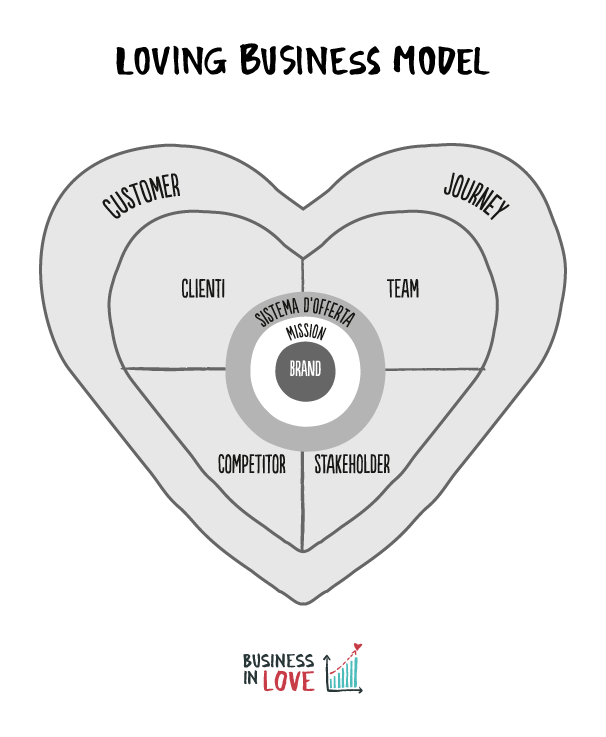Doing business using
the most powerful energy ever
From war to love
There are many ways of organizing a business. The best known draws inspiration from the military strategy: conquering the territory, identifying target-clients, defeating competitors/enemies, managing resources/people, developing a chain of command complete with ranks and orders.
Management and marketing processes owe a lot to the organization of the army and to its operating procedures.
There is no doubt that for a long time this approach has borne fruit, however in the post-crisis era things have changed.
Clients are seen as people again, and so are employees, suppliers, shareholders and all the other stakeholders or interest bearers.
If with all these actors we want to maintain a fruitful long-lasting relationship, that creates shared value over time, we need to build strong bonds founded on positive emotions and feelings.
We just have to look at all the advertisements to realize that more and more companies have understood the importance of triggering the spark of love to be successful on the markets.
Talking about the connection between love and economy or promoting its concept, how-ever, is not enough to consolidate it.
What we need is a radical change which can only be achieved through a new business model that we have examined and codified over the course of 2 years, calling it the Loving Business Model.

Loving Business Model. Designed by Alice Alessandri and Alberto Aleo.
Copyright Alice Alessandri and Alberto Aleo – Franco Angeli. All rights reserved.
The value oriented approach
According to the traditional economic theories there are two types of market approach: the product oriented one – which focuses on improving production processes and ensuring constant innovation paying attention to the coherence of each activity – and the market oriented one. Companies that adopt this second approach are more compliant and alert to the market, less self-referential and more diligent in taking every opportunity to meet customer demands.
Our independent research, which involved hundreds of companies and thousands of market participants and covered 12 different sectors with the contribution of international researchers and experts, has revealed a new type of company: the value oriented one, which focuses on what it believes in and on its essence, and offers not only products and services but also, and above all, meanings.
While studying this kind of organization we developed the Loving Business Model, a business model that redesigns all the aspects of the life of a company: from brand strategies to the selection of target customers, from price positioning to the definition of the offer. A model that shapes all our consultancy and training activities.
Doing marketing according to this approach means starting from ourselves, then bringing out all we can offer in terms of products, services, communication and experience, and finally collecting results that go beyond the mere short-term turnover. An integral vision of economy, in accordance with the law of reciprocity that reads: first of all being, then giving, and finally receiving.
The Loving Business Model in action
Therefore what is the path we are following to help our clients move from the theory to the practice of an approach designed to bring love back to their companies?
During our consultation and training sessions we keep in mind these 9 steps:



